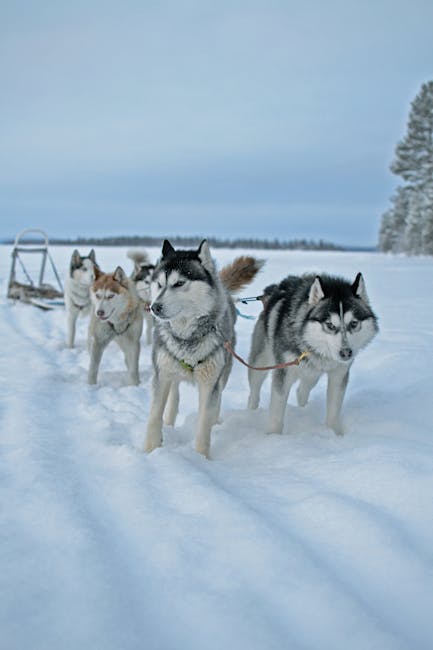The Perils of Overheating in Dogs
Dogs, unlike humans, don’t sweat efficiently through their skin. Their primary cooling mechanism relies on panting, which is why they’re particularly vulnerable to overheating, especially during hot summer months. Exposure to extreme heat can lead to heatstroke, a life-threatening condition requiring immediate veterinary attention. Understanding how to keep your canine companion cool and safe is crucial for their well-being.
This comprehensive guide explores various methods to keep your dog cool and safe, debunking common myths and offering practical, evidence-based advice. We’ll delve into the safe use of ice, addressing concerns about potential dangers and providing tips for responsible application. We’ll also examine alternative cooling methods to ensure your dog stays comfortable and healthy throughout the year.
Understanding Canine Heatstroke
Heatstroke is a serious medical emergency that occurs when a dog’s body temperature rises to dangerous levels. Symptoms can vary but often include excessive panting, drooling, lethargy, weakness, vomiting, diarrhea, and even collapse. If you suspect your dog is suffering from heatstroke, immediate action is critical. Seek immediate veterinary attention. While waiting for professional help, you can take steps to lower your dog’s temperature, such as applying cool (not ice-cold) water to their paws and belly and providing them with cool water to drink. Never use ice directly on their skin without proper preparation.
The Responsible Use of Ice for Canine Cooling
While ice can be a useful tool in emergency situations, it’s crucial to use it correctly. Applying ice directly to your dog’s skin can lead to cold burns or tissue damage. The best approach involves wrapping the ice in a towel or using a specifically designed cooling wrap. This provides a buffer between the ice and your dog’s skin, allowing for gradual cooling without the risk of injury.
Methods of Safe Ice Application:
- Ice Packs Wrapped in Towels: Place ice cubes or ice packs in a clean, damp towel. Apply this wrapped ice pack to your dog’s paws, belly, or groin area – areas with good blood flow.
- Cooling Wraps/Vests: Commercially available cooling vests or wraps offer a convenient and safe method for applying cold therapy. These are often designed to be filled with ice or cold water and provide a consistent, even cooling effect.
- Ice Water Baths (under veterinary guidance): In extreme cases of heatstroke, under the direction of a veterinarian, a cool water bath might be necessary. Avoid using ice directly in the bath; instead, use lukewarm or cool water.
Important Note: Always monitor your dog closely when using ice for cooling. If you notice any signs of discomfort or shivering, remove the ice immediately. Your dog should be comfortable, not freezing.
Alternative Cooling Methods
Ice is not the only way to keep your dog cool. Here are several other effective methods you can utilize:
- Provide Plenty of Fresh Water: Ensure your dog always has access to clean, cool water. Consider using a water fountain or bowl designed to prevent algae growth.
- Keep Them in the Shade: Avoid letting your dog exercise or stay outside in direct sunlight, especially during the hottest parts of the day.
- Grooming: Regular grooming helps remove excess fur, improving air circulation and reducing body heat. This is particularly important for long-haired breeds.
- Fans and Air Conditioning: Use fans or air conditioning to create a cool environment, especially indoors.
- Cooling Mats: Self-cooling mats provide a comfortable surface for your dog to rest on. They absorb body heat and release it gradually.
- Frozen Treats: Offer frozen treats such as frozen bananas, carrots, or even commercially available dog ice cream. This provides hydration and cooling simultaneously.
Recognizing the Signs of Canine Hypothermia
While overheating is a serious concern, it’s equally important to avoid undercooling. Signs of canine hypothermia include shivering, lethargy, weakness, slowed breathing, and a drop in body temperature. If you suspect your dog is suffering from hypothermia, seek veterinary attention immediately and gradually warm your dog using blankets or warm water.

Debunking Myths about Ice and Dogs
There are several myths surrounding the use of ice for cooling dogs. Let’s address some common misconceptions:

- Myth: Ice baths are always the best way to cool a dog down. Fact: Ice baths should only be used in extreme cases of heatstroke and under veterinary supervision. They can lead to hypothermia if not done correctly.
- Myth: Applying ice directly to the skin is harmless. Fact: Direct ice application can cause cold burns. Always wrap ice in a towel or use a cooling wrap.
- Myth: All dogs respond the same to ice. Fact: Different dogs have different tolerances to cold. Monitor your dog closely.
Conclusion
Keeping your dog cool and safe, particularly during hot weather, is a vital aspect of responsible pet ownership. While ice can be a useful tool in emergency situations, it’s critical to use it safely and responsibly. By understanding the potential risks and utilizing a combination of cooling strategies, you can help ensure your furry friend stays healthy and comfortable throughout the year. Remember that prevention is key; always monitor your dog for signs of overheating, and seek veterinary attention immediately if you suspect heatstroke. Always prioritize your dog’s well-being and consult your veterinarian for personalized advice.


